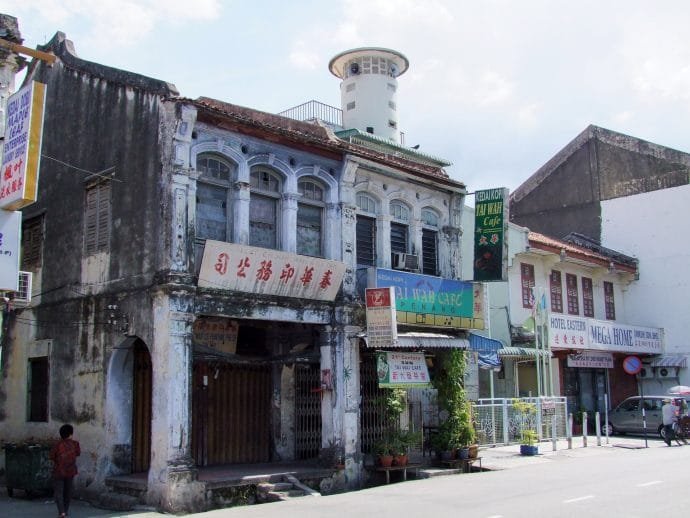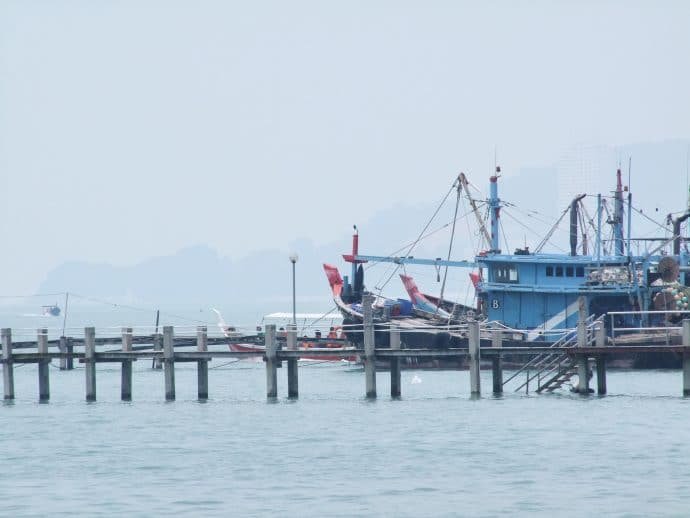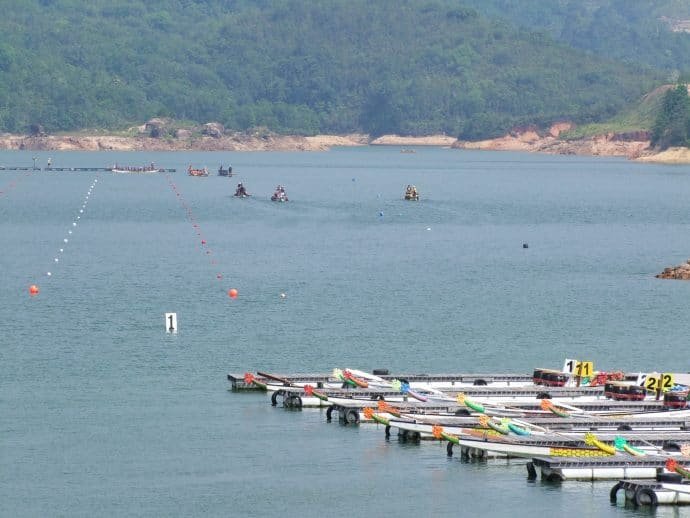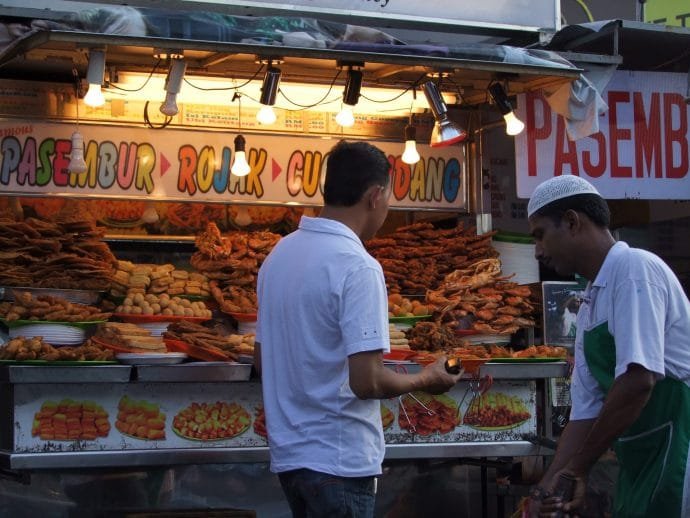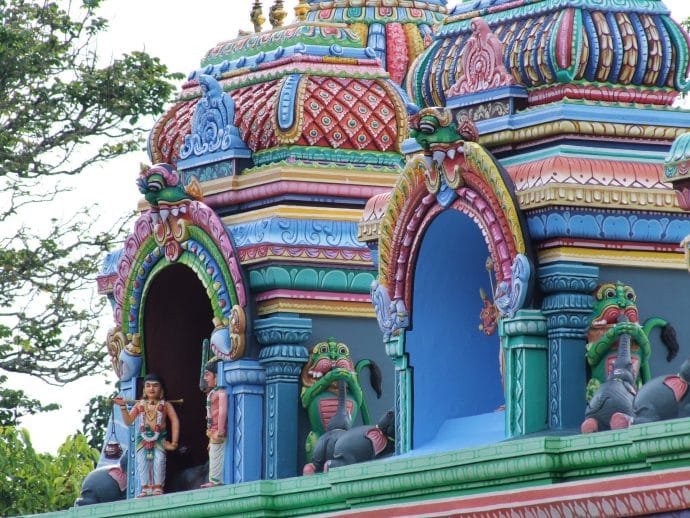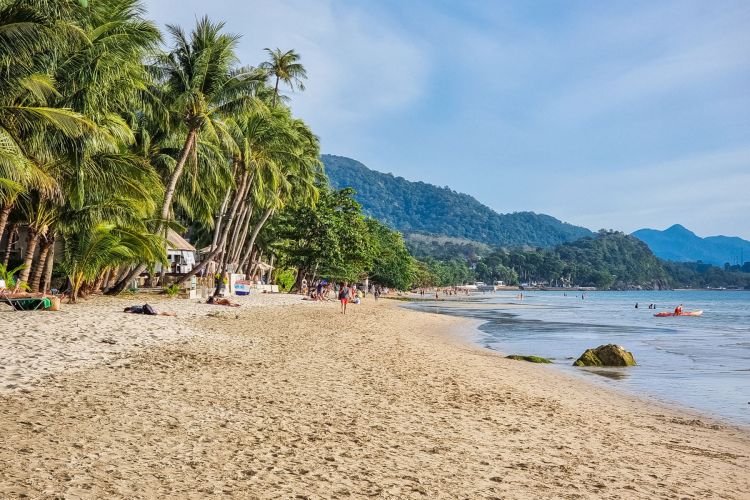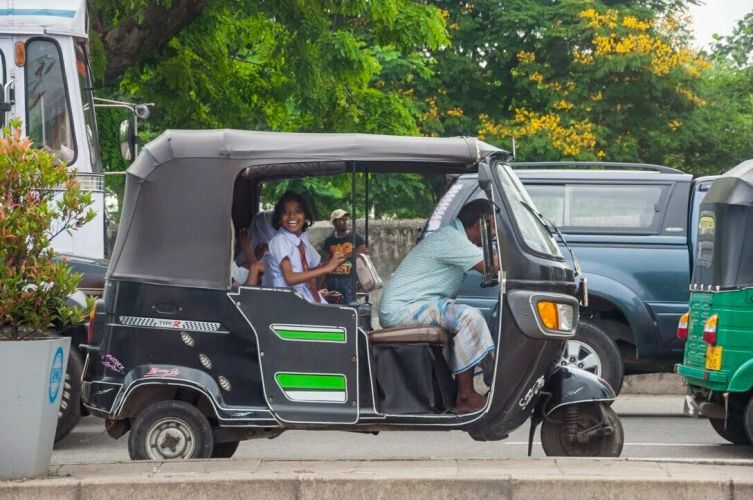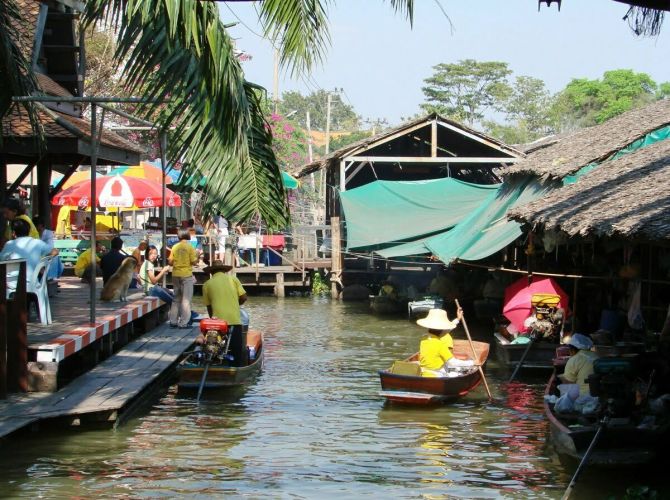Penang is an island located close to the border with Thailand, in the north of the Malaysian peninsula. To put it in context, I had to renew my visa (transitioning from a tourist visa of my beginnings to my first non-immigrant O visa). I had chosen Penang as a convenience, because at the time, I had read that a visa could be easier to obtain from one embassy to another, and at that time, Penang fit the bill perfectly.
It was also an opportunity to discover a new country, since it was my first time in Malaysia. I subsequently had the opportunity to go there regularly, always with a certain pleasure in hanging out in the streets of George Town, its iconic main city.
5 days is the time we had available during this first visit, the one where we stayed the longest because in addition to the administrative procedures, we obviously wanted to enjoy the place a little.
Welcome to George Town
As soon as we arrived at the airport, I felt a totally different atmosphere from Thailand. This impression was quickly confirmed when we were looking for the bus to take us from the airport, located at the very south of the island, to the city center in Georgetown, in the north (about 16 km).
For this, after asking twice (it's not really indicated...), we arrive at the bus exit where someone kindly tells us to wait for the next one in so many minutes, before announcing to us with a smile (a few minutes later) that the bus was arriving.

We pay in cash (ticket, no coins here...) in a box next to the driver, the bus is modern, but I have the impression of paying in an "old-fashioned" style, it is better to have exact change, because given the system it is not possible to give change...
Arriving at Komtar, the tower serving as a bus terminal stop, we then had to reach our hotel, the Continental (we wanted a decent room and a swimming pool for the lady).
The hotel seemed quite far away on our map, so we decided to please a trishaw driver (or a pedaler I should say) who was waiting in the corner. The trishaw is a bit like the ancestor of the tuk tuk, it is the local transport, which comes in the form of a bicycle with a space in front to carry 2 people max. Apart from the fact that it can be exhausting, and the few customers apparent, this makes it a rather difficult job…

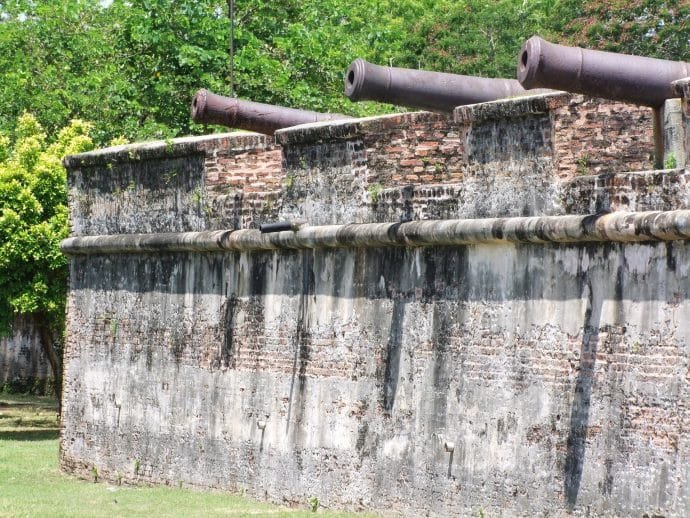


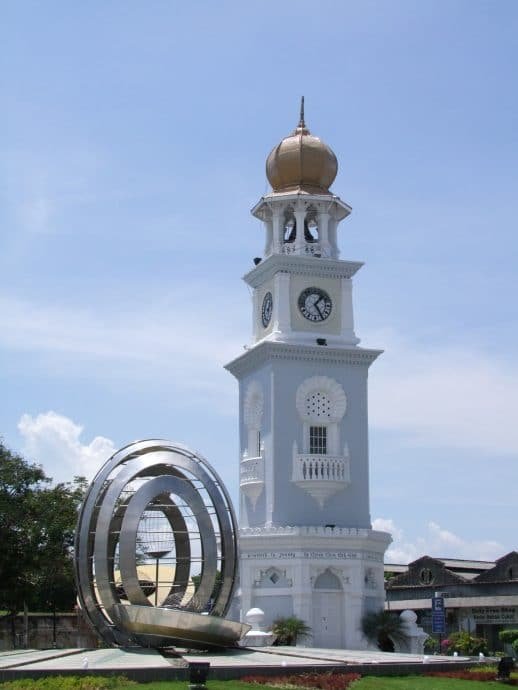
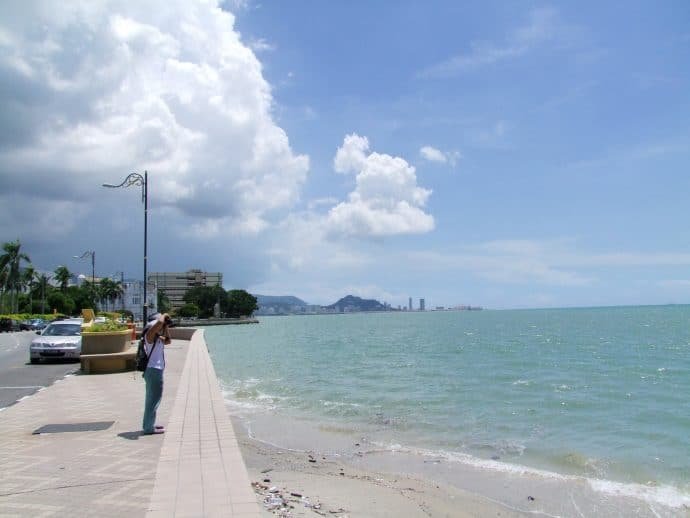
In the end, we had barely 1 km to get to the hotel, but what does it matter, we support local businesses! We settled into our room to take a breather and have time to count our Ringgits changed earlier at the airport.
Then we went back out into the street, just to find something to eat. We set our sights on an Indian restaurant not far from our hotel. You should know that in Penang, the population is a melting pot of Malays, Indians and Chinese, at least of origin, because they are Malaysians first and foremost.
But the consequence of this is that you find this mix of culture in Penang, starting with the food. We were entitled to dishes at only 3-7 RM on average (around 25 to 55 Baht).
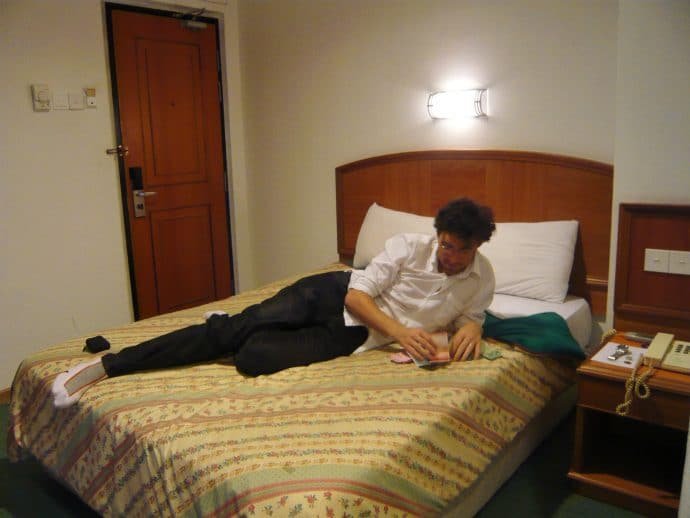

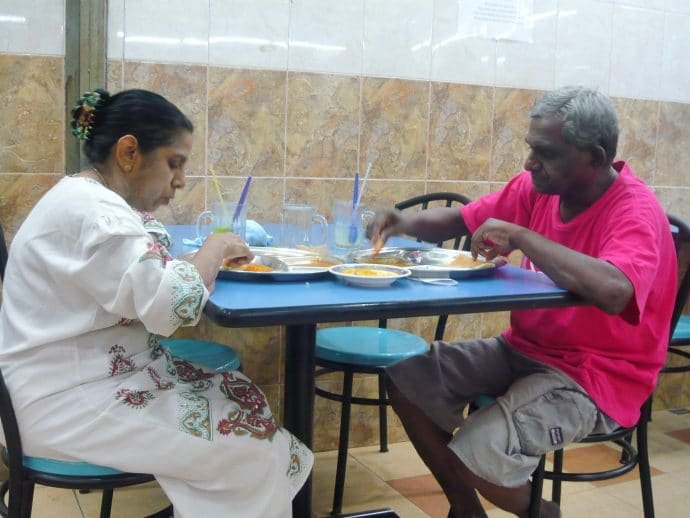
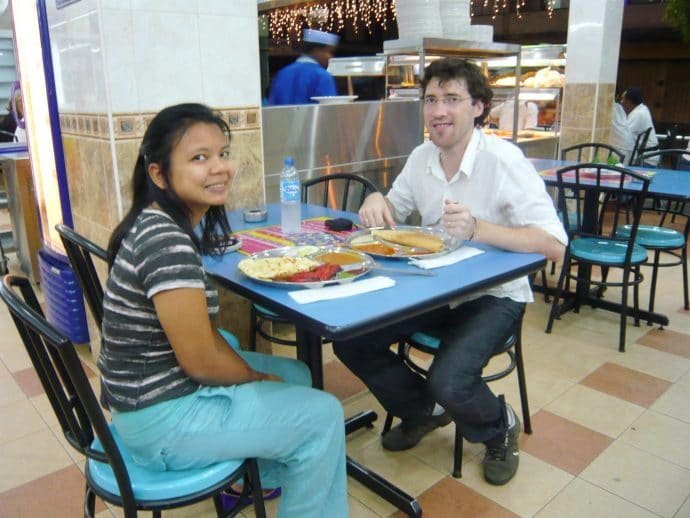
We first settled for a little digestive stroll in the area, so effective that an hour later, we were still a little hungry... It's a good thing, right in front of our hotel there was a street restaurant making "roti", these kinds of pancakes that I love for dessert in Thailand. Here, it's more of a meal with a little meat in it. So we had a snack before returning home.
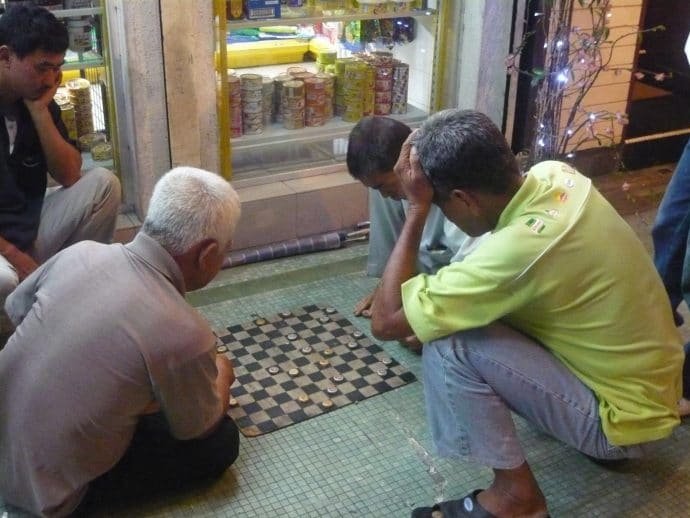
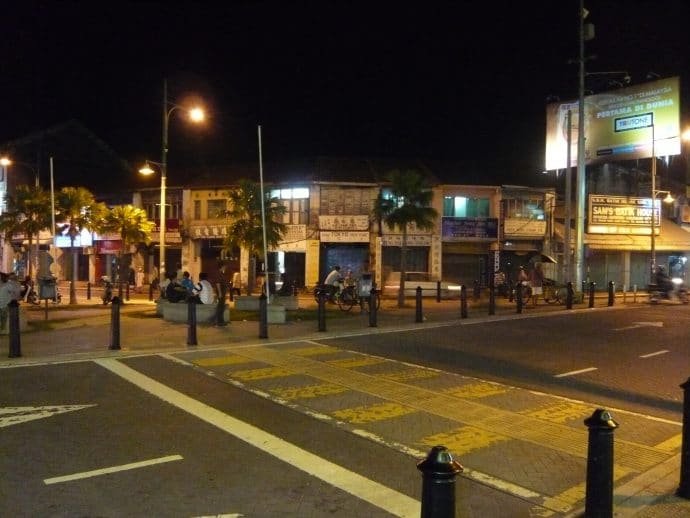
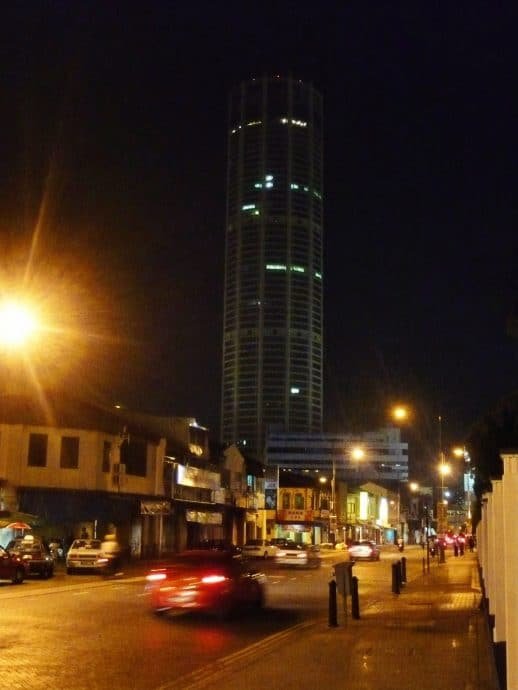
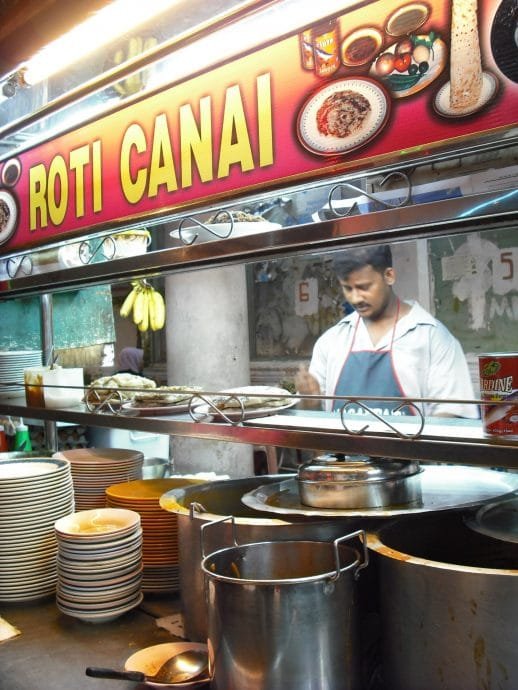
Day 1: Overview of the East Coast and stroll in Georgetown
The next day, I started the day with the obligation that brought me here, to do the procedures to obtain my new visa at the Thai Consulate in Penang. Once that was done, the time to queue a little and drop off my documents and passport, we could visit quietly.
To put it simply, as usual, we decided to rent a scooter to move around freely. Here we are, off to visit this island with its strong character.
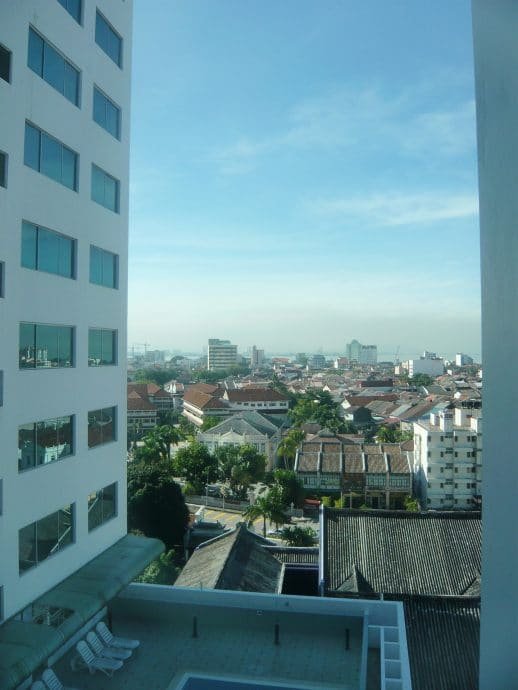
If Malaysia is predominantly Malay, and a population that is 60% Muslim, Penang is the only state in Malaysia without a Malay majority. This is due to a continuous immigration of Chinese, especially in the 30th century and up until the 200s, which set the island and the city apart from the rest of Malaysia. If we add that there was also the British colonial past (which lasted XNUMX years anyway), it makes quite a mix and Penang is rather colorful, with a rich colonial architecture, it makes you want to go.
Leong San Tong Khoo Kongsi
In the maze of streets, real architectural treasures are hidden. In addition to the number of renovated shop houses (small houses with the lower part converted into a store) adjacent to other very dilapidated ones, there are “Kongsis”.

A Kongsi is a special place, unique to the Chinese. It is neither quite a house nor quite a temple, as it also served as a meeting place. Penang was once the hub of the Chinese opium trade in the 19th century. The island remained in the hands of Chinese secret societies until the early 20th century.
Many of the new arrivals were looking for landmarks, so the Kongsi were used to shelter Chinese people from the same clan or family. They could then have a pied-à-terre and be briefed on local life, and have help to start a business.
The Khoo clan's is considered to be the most ornate and important (and incidentally the largest), which is why it has also become a museum. It was reached via Cannon Street (Lebuh Cannon), where it is located as a passage under the row of shophouses lined up in front.

We then find ourselves in front of a sort of "hidden street" with on each side a beautiful row of typical houses on 2 floors. A few meters further, we were in a courtyard and stood opposite the main building of Kongsi. As I like historical anecdotes, this current building dates from 1906. The original version dated from 1851, the temple was much larger and its resemblance to the imperial palace suggested according to the belief that the gods saw this construction as a provocation... As a result, it burned, struck by lightning...


Very stylish, it's a place worth a look, luckily as it was early there was no one there (but I suspect given the tranquility of the island that even in the middle of the day it remains calm like that...).



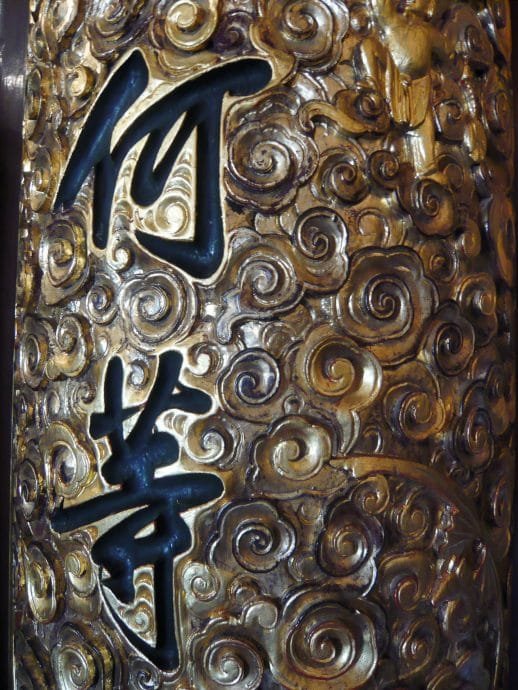

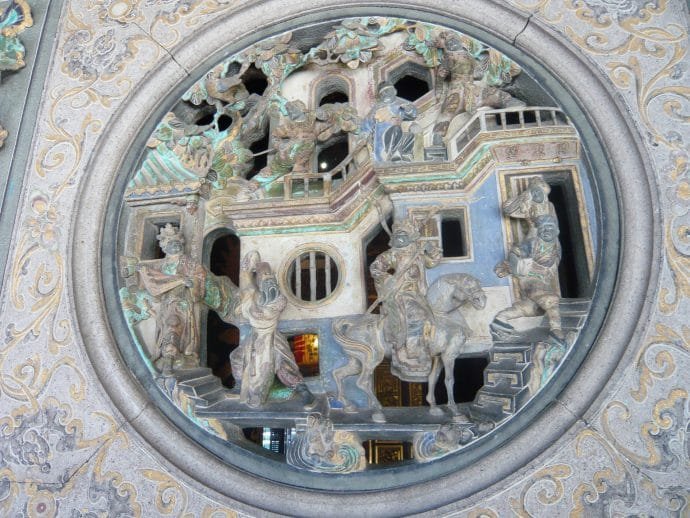

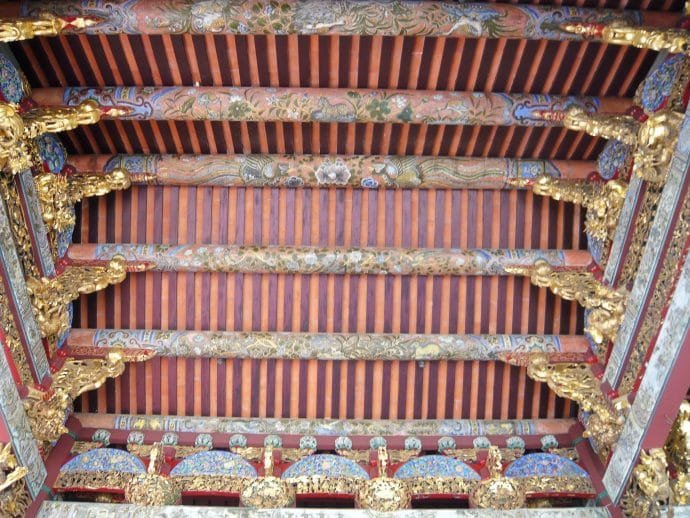
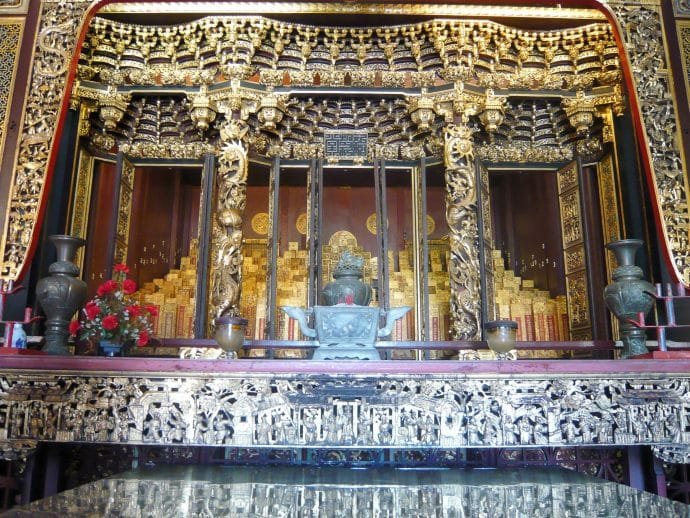

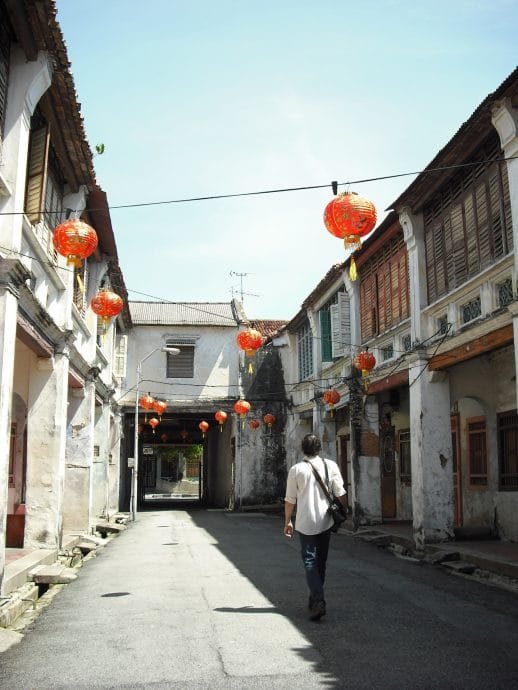
After our first visit, a return to the hotel was necessary because our battery was already flat... Damn, I thought I was ready... But hey, after that, we could finally set off to Georgetown, the name given to the city in honor of the King of England at the time, George (III).
As you will see, there is a mixture of old Europe and Asia. Georgetown obviously has its Chinatown, but also its Indian quarter plus all the districts whose colonial remains are obvious. Such as around the street of churches (one Catholic and one Anglican), where the town hall is located not far away in a typical European early 20th century style.
We then arrived at the easternmost tip of the island. At a roundabout there was a tower with a clock dedicated to Queen Victoria.
Another notable building, Fort Cornwallis, which we headed towards first (in honor of Charles Cornwallis who was a British general, then Governor-General of India (1786-1793) and finally Viceroy of Ireland. He played a major role during the American War of Independence by fighting the insurgents, that's the story).
It's very cosmopolitan and architecture fans should find what they're looking for.







After this breath of sea air for our nostrils, we decided to continue along the coast going down towards the south and along the Weld quays. This part of the coast has little interest in appearance, the English with their East India Company had made the city a free port (and remained so until 1969), today it is an industrial port still busy.
Weld Quay
Encouraged by indications on the map (which served as our tourist guide incidentally), I wanted to go there, because there are jetties there, lined with houses on stilts. On the seafront, the Weld quay brings together 6 jetties which together constitute a real village on stilts. Each jetty is inhabited by members of the same Chinese clan. There is the Chew, Yeoh, Lim, Lee, Tan and Ong jetty.

We ended up walking for what seemed like a very long time to Jitima (1,5 km to be exact), in his defense, it's true that there wasn't a tourist in sight, not many interesting buildings along the way and indeed not much to see in the end (Editor's note: 2018: we had clearly misunderstood the perimeter, see the article on Georgetown street art to understand that the jetties are worth a look!).
It must also be said that we were starving (well, no big surprise, more so than me) and that there wasn't much in the area in terms of restaurants.



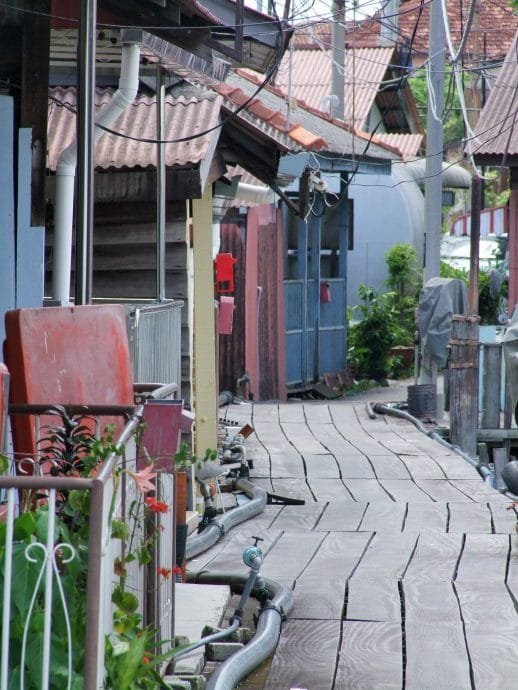
Next, we returned to the old town of George Town. The idea was to return to the hotel to relax a bit and especially enjoy the pool. To do this, we passed in front of a mosque.
La Kapitan Kling Mosque is one of the oldest in Penang. In 1801, Sir George Leith, Governor of Penang, granted the Muslims a 7-hectare plot of land to build a religious building. It was Cauder Mohhidden, the Kapitan of the Indian Muslim settlers (Kapitan being a Russian word for the rank of captain), who was the originator of this mosque, which would later be named after him.



Then we were going to go through the backpacker street, a sort of alter ego to Khao San Road in Bangkok, Chulia Street. Quite quiet at this time. But you can feel that there are more bars, restaurants and shops offering services like visas, scooter rentals and excursions in the surrounding area.
It is also considered the Chinatown area. Georgetown's population is predominantly Chinese and their culture has developed freely and independently from the Maoist Cultural Revolution. As a result, Chinatown has grown a lot and is full of attractions.


It was then that we were going back up Chulia, turning onto a perpendicular street that we had the right to come across a real character. In fact, we had already come across this person with these airs of a little pervert, yes, I mean pervert, looking at Jitima with a sideways eye and especially throwing him little furtive licks of the tongue! Not mean in the least, it rather made us smile despite the apparent awkwardness of the scene.
There you go, later in the day, on the way back to our hotel, I see our guy again, sitting calmly, I wave to Jitima telling him that his new love/friend is there. Immediately, he spots us again, and another lick, Jitima returns his lick (I wouldn't have dared, you never know what it could mean...) it didn't bother him more than that, given the story in question, I wanted to take a picture of him, as soon as I took out the camera, he rolled on the ground and stayed lying like that until I took my picture, as if nothing had happened!
I think he must not have been in his right mind... If you come across him, don't be afraid, he doesn't bite!
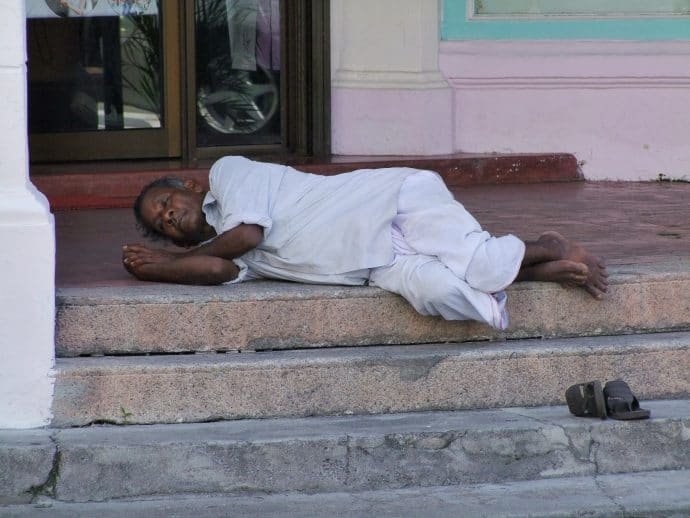
We had already walked all morning, it's still early afternoon, we're just finishing hanging around a few streets behind our Continental hotel, before going back to rest a bit, with this heat these 4/5 km of walking quickly exhaust you.

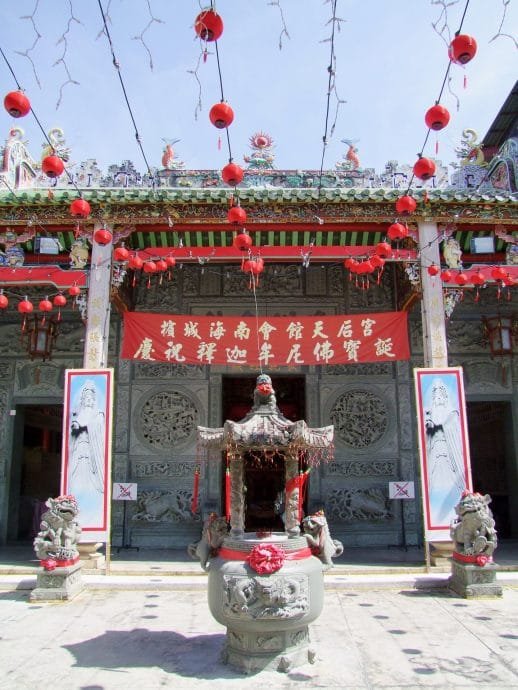
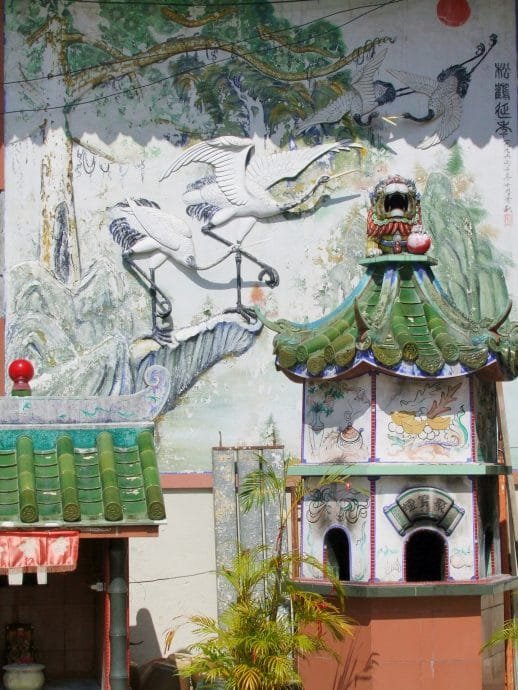


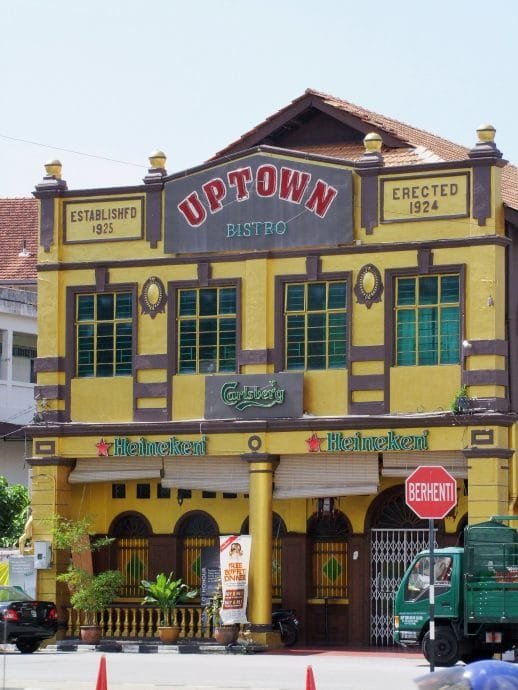
Back at the hotel, a quick look down from our room, no one at the pool, that's good! Here we are on the terrace with the pool to relax, swim and enjoy the view. Here we can see the landmark of Georgetown, namely the Komtar tower, it's the bus depot. Arriving from the airport, this is where you will arrive, to leave, the same.



The bridge is one of the longest in the world (the 3rd) and the longest in Asia at 13.5 km. Although we had no complaints about this hotel (with our pool), Jitima wanted to try another one, this one in particular, the Cathay, which has a rustic charm for the same price as the one we were currently staying at. She will still regret her decision, especially for the lack of a pool...


We will hang around there for a good part of the afternoon, which means that we will not go out during the day, except to eat... So this is our second evening here. Having heard about a fairly famous night market, we decided to go there for a walk, especially since it is barely 5 minutes from our hotel. We went there, maybe a little too early, because it was still deserted, so not very lively, not everything was open and not very attractive. We still ate there that evening, but did not return there after that...
It was the Red Garden Food Paradise. It strongly resembles the famous "food-court" system in Thailand on the organization of the places, except that there are no tickets, you pay directly (a meal for info costs on average 3-4 RM).
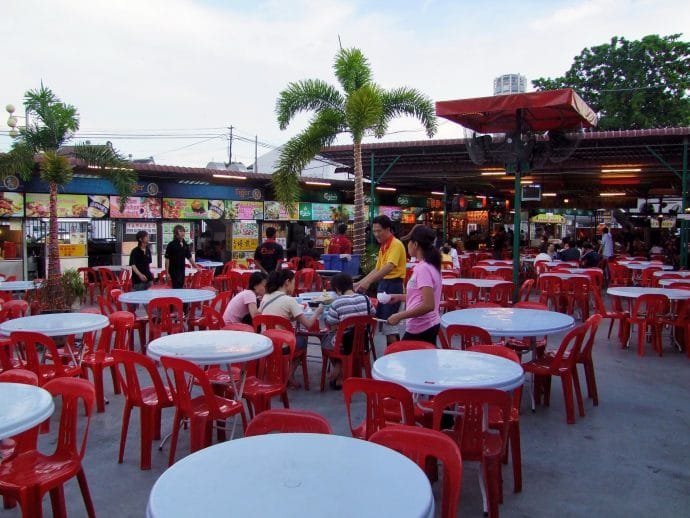

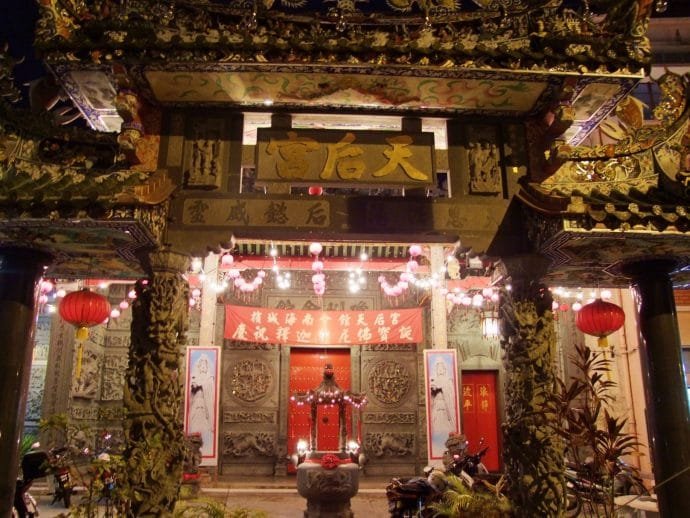
Day 2: Shopping mall and Georgetown walk
And here is another day that begins (who said that at 25 years old, the days go by faster!!??). Nothing very clear about our program, we leave with the scooter but not without having first collected the precious sesame (the visa).
So here we are wandering without a specific goal, somewhere, it is in this kind of circumstance that we are better disposed to visit a place, because without a program, we are more open and able to discover places.

Looking for Nagore place
Our leitmotif, after some thought, was to go to a neighborhood further north of Georgetown, called Nagore Place (or Nagore Square). Indicated as an interesting point in our Lonely guide, we thought we'd just have to take a look.
At least it gives us a starting point to visit. We went through small streets where we came across houses that were a bit abandoned, including a large mansion that had lost its splendor. We also came across (once again) a Chinese temple, but we were too lazy to go and see inside (there comes a time when you get fed up…).


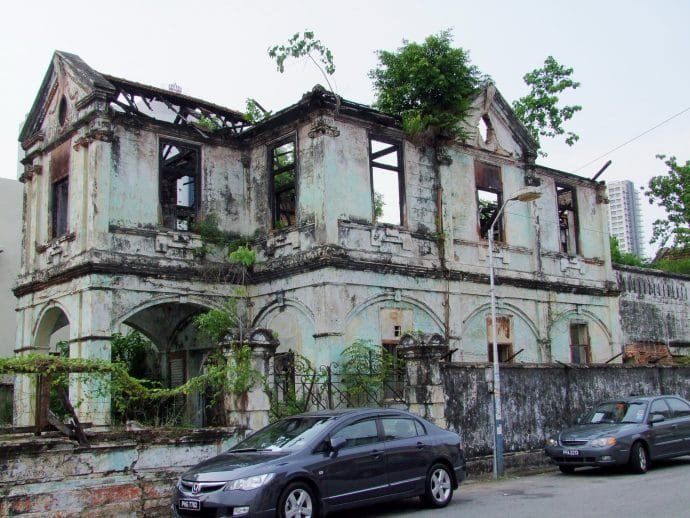
When we arrived at the area in question, we quickly saw that it wasn't that interesting so we didn't linger there... We then went back towards Chulia Street because we had spotted a small Mexican restaurant.

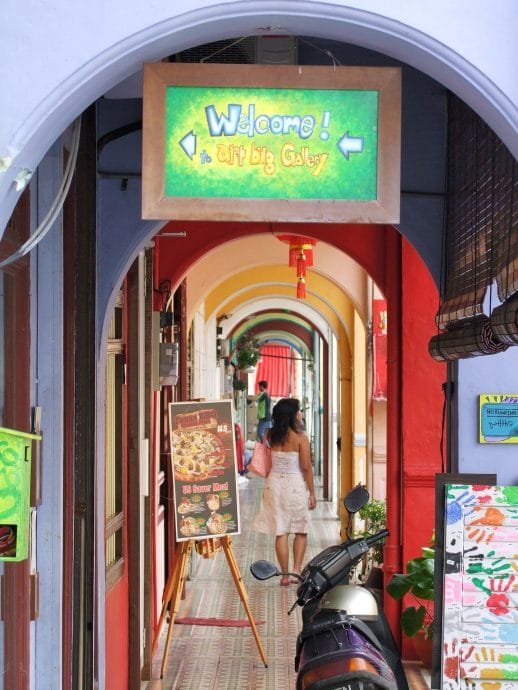
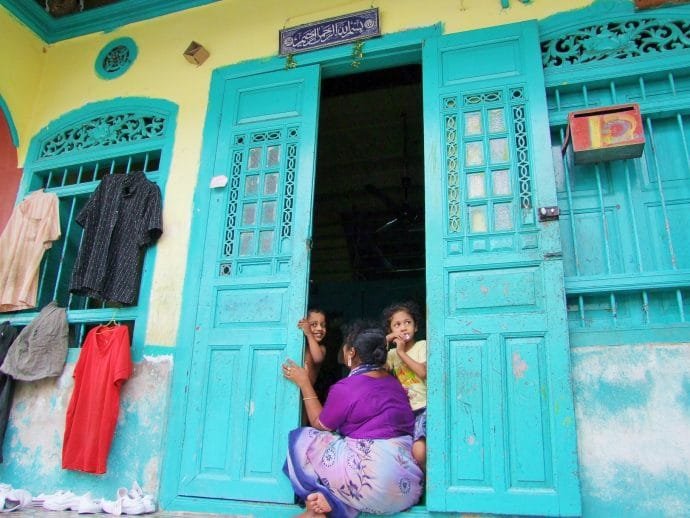
Having decided to take a stroll in a shopping centre, we immediately see that it is not as prestigious as a Siam Paragon or other… But this one was an old centre, a bit like the Pantip in Bangkok which doesn't look so good either… And the photo in question (below) was taken in the corridor connecting this old centre to another, a bit better but also tired. I didn't take a photo but still there are modern centres, near the Gurney Drive night market for example, it had more character.
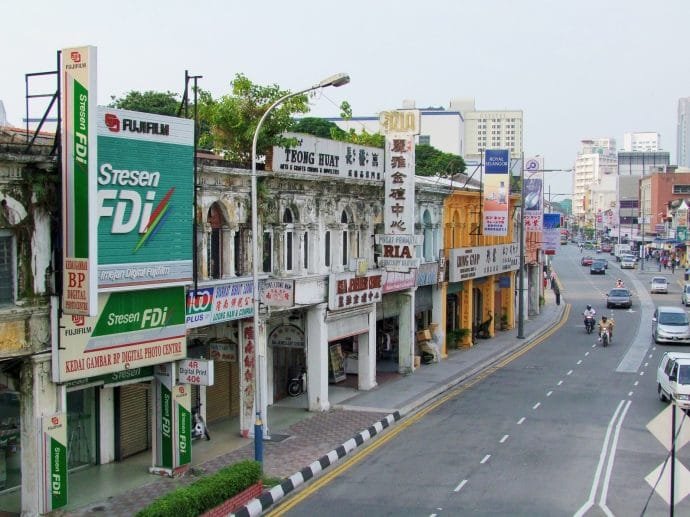

We took advantage of being there to have our lunch break. Wandering through the aisles, we finally made our choice. I had an Indonesian dish (I think) a sort of rice gratin that was very good, this place made a good impression on me, I went for a little dessert… I hate wasting food, but there, I have to admit that it was the worst chocolate cake I have ever eaten… Impossible to take more than one bite…
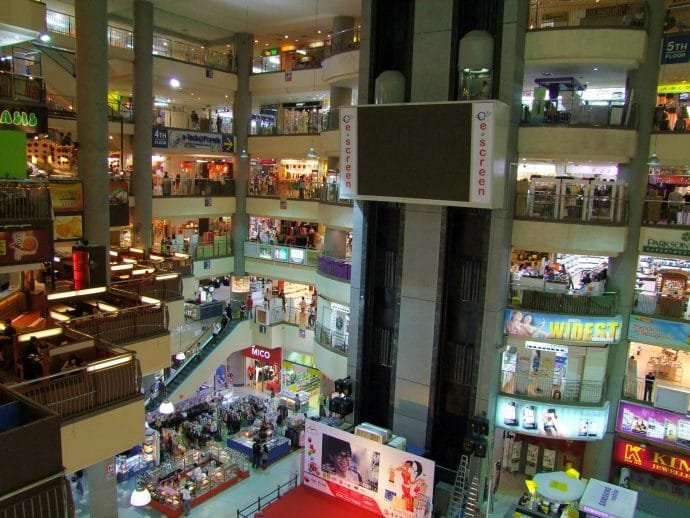
Back in the old town, Chulia Street or the backpacker district
Here we are again after this half-failed meal (the cake stuck in my throat…), still in Georgetown, we still had Little India to go see among other things but it won’t be for this time.
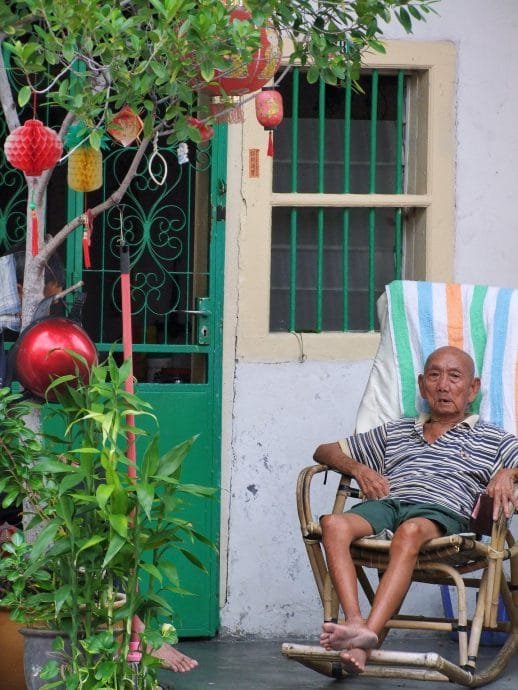



At this time, Chulia was getting a little lively and we could see the street restaurants starting to line up, the feeling of being back "home". However, in terms of food, we are far from Thai excellence, but there is still something to do. In fact, the most frustrating thing is that in some places, such a menu will only be valid between such a time and such a time...





Back at the Continental Hotel, there was no need to go far to eat. Just cross the street in front… We ate there almost every night. The famous roti canai is a Malaysian specialty very popular both in the morning and at dinner. It looks like a pancake. It is served with a bowl with sauce usually curry. This is the definition of Wikipedia…
From my point of view, well yes it is a kind of crepe batter, but not liquid, already prepared, they enlarge it using a very particular technique then fill it with the ingredients of our choice and heat it all up by enclosing the ingredients in the middle (in a turnover).
There is a version in Thailand that is mostly eaten (at least by me) as a dessert or a simple snack, often with just eggs and banana for the most part (I love it). Here in Malaysia, it is a meal in itself and it was very good there.

After that, we went for a digestive stroll as often. We found a quiet spot near the hotel, by the sea, to enjoy the sea air. The hotel was really well located, there's no denying it, just next door, crossing the street on the side we were on the street with all the bars (in the extension of Jalan Penang), the main lively street of the island with these bars lined up.

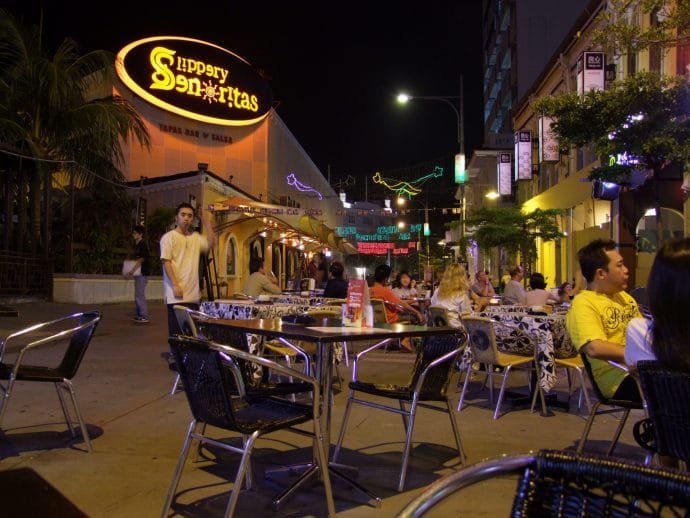
Day 3: Moving and Walking in Penang National Park
On the agenda today, Penang National Park, on the map, it is marked located next to Teluk Bahang, a fishing village in the northwest of the island. But before that, we wanted to test the hotel spotted behind ours, in an old colonial-style building.
And a change of hotel, one!
For this penultimate day, we had decided to change hotels. Finding the one just behind our previous hotel charming from the outside, we decided to try the change. It is a Chinese family who are the owners and who clearly run the hotel as a family only, so it is also them and not maids or anything who change the sheets, etc… At least, that's what I think, because I only met "old people" as staff… and it was a nice little lady who welcomed us (a little coldly but hey…)
It is a rustic place, do not expect luxury. Like the other hotel, since it is located on the street behind, the location is still very good. The rooms are very large, in a 50s style, if you want to travel back in time, for one or more nights this place is for you. No mini bar, TV and all that, no, just space, 2 large beds, a wardrobe, a chest of drawers, and a bathroom, rustic too, it must be said.
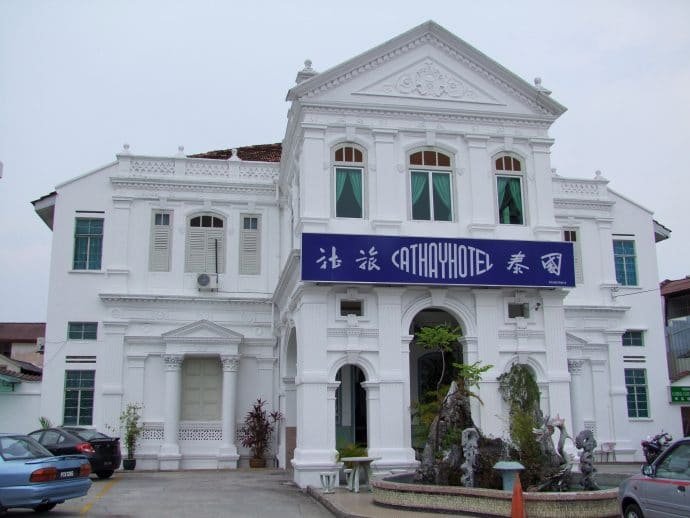

Read the reviews on Trip Advisor, you will see that opinions are divided. For our part, if it is true that the bathroom would need some touch-ups, it remains tolerable to spend 2-3 nights as we did, especially for this price. Because otherwise the room was clean, the place is quiet. The atmosphere inside was special. We felt that the place had lived.
Even the swing doors in front of the room doors added to the slightly special aspect of the place. However, don't expect a super warm welcome, I have the impression that they are depressed at the reception (when they are simply not asleep...).
In summary, it all depends on your desires and budget, the Cathay Hotel was 70 RM, or to compare with Thailand (which is on my blog the monetary reference, namely the baht), 690 Baht. The previous hotel, the Continental, is from 101 RM or about 1000 baht, but including a little more comfort and especially the swimming pool… And possibly the view, breakfast too (included at the Continental).
Editor's note 2018: Look no further for this hotel, it has since been completely renovated to become a luxury hotel, The Edison George Town (100€ per night)
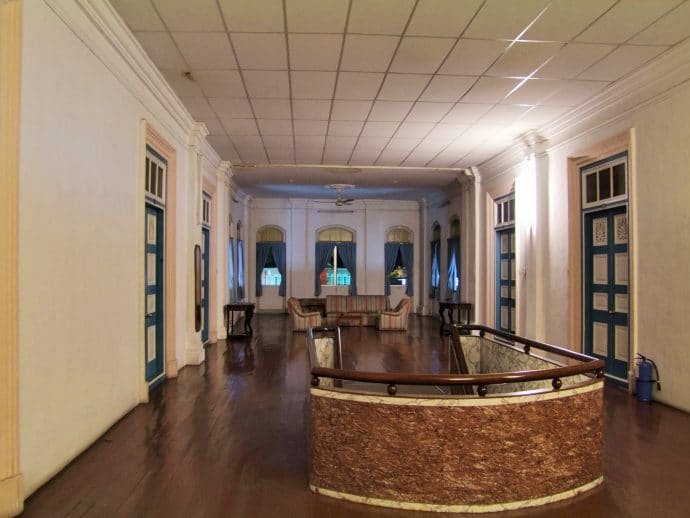
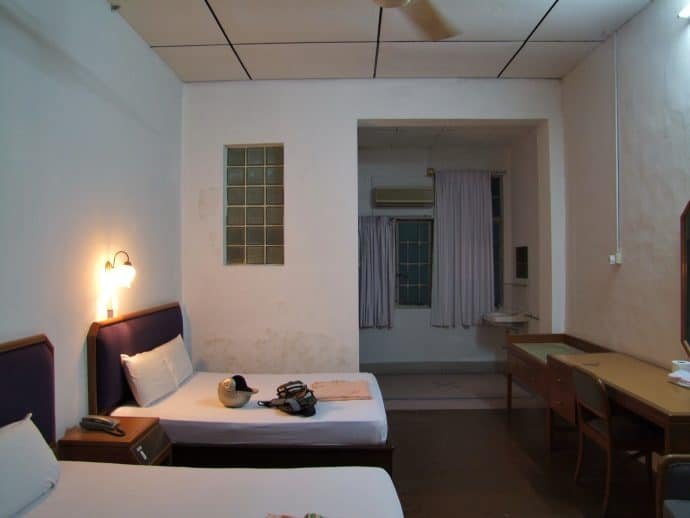
Once we were comfortable, we were ready for our visits of the day. So we got on our 2 wheels to go to the northwest of the island, towards the Penang National Park.
Penang National Park
Something rare that I am not used to in Thailand, where everything is paid (well especially for the foreigner that I am ...), the entrance is free. You just have to register on a register (they control the entries / exits), and you have to indicate how far you intend to go, there are 3 kinds of "circuits" / walks to do, in fact not circuits, because it does not make a loop, but there are 3 different points to reach depending on the time you want to spend there.
The road (or rather the path) to get there is rather winding and runs along the coast, you can normally reach a beach from there, Monkey beach, by walking a good 3 kilometers, and even further, it is possible to go to the lighthouse. But we didn't know that because we went there a bit haphazardly without really knowing what there was...
For our part, we were content with a small nature walk for only 1,5 km, the time to reach a beach where there is a research center on marine ecosystems. I didn't feel Jitima excited by the place and at the same time, going to Monkey Beach and back, that's 7 km, we didn't want to spend the day there...
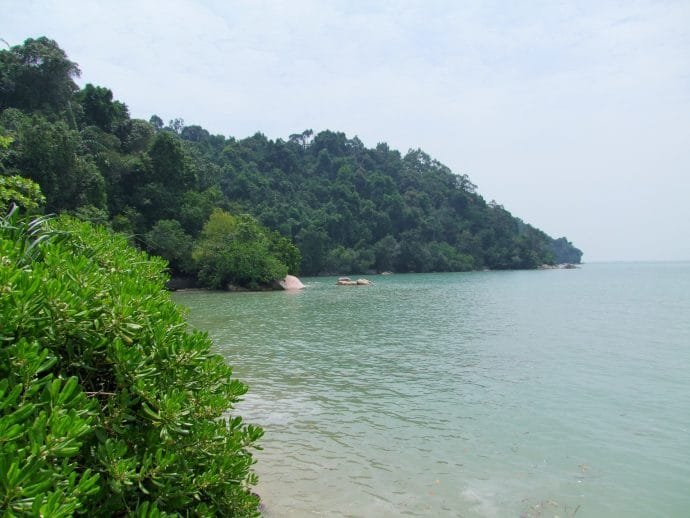


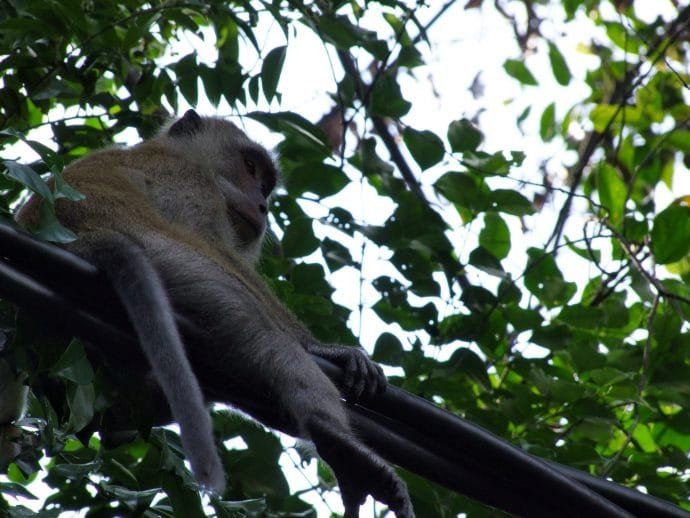
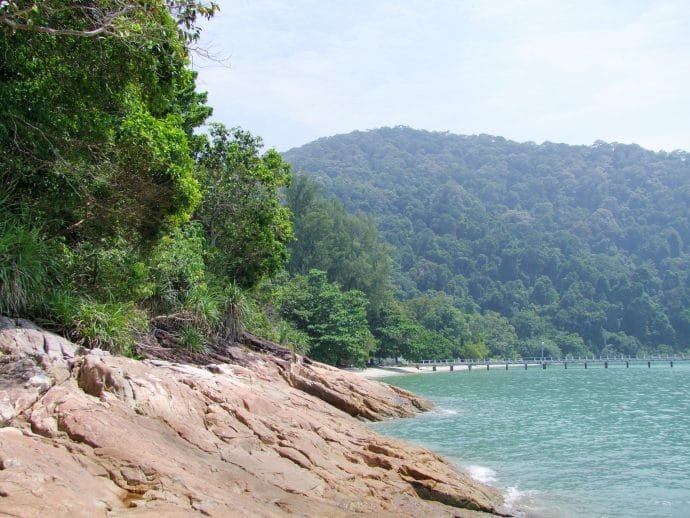
Back to our vehicle, we headed towards the dam and its artificial lake (still towards Teluk Bahang, the lake being soberly called on the map as the Taluk Bahan Reservoir…). That day there was a festival, of which apart from the posters, we don't know more about it, except that it was about a boat race (Editor's note: I learned that it was the Penang Dragon Boat Festival, a famous race that has been going on for 30 years).
Here again, we didn't hang around too long, it must be said that we were restless that day and we left late because of the change of hotel... On the way back to Georgetown, we decided to stop at one of the local beaches (north of the island) this time, just to relax a bit.

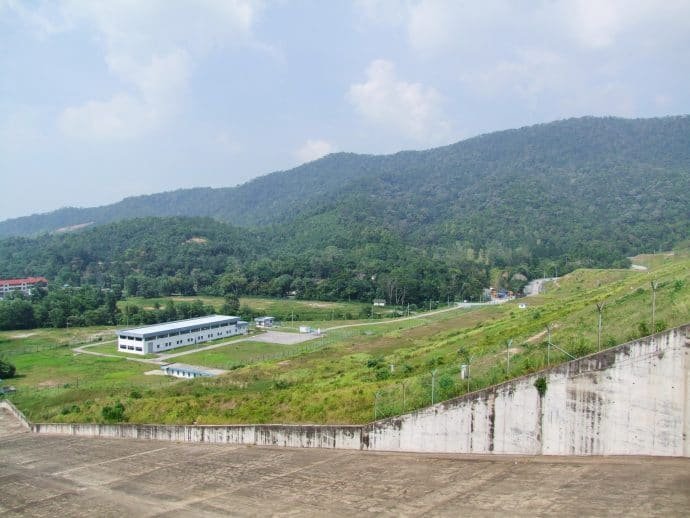

Just like in Thailand, various activities are possible, from horse riding, parasailing or jet skiing, there is plenty to choose from. Despite the heat, we preferred to simply sit in the shade of a tree and take a little nap (given the few people, no need to fight to find a quiet spot).
We'll just dip our little toe in the water before heading back towards Gurney Drive.
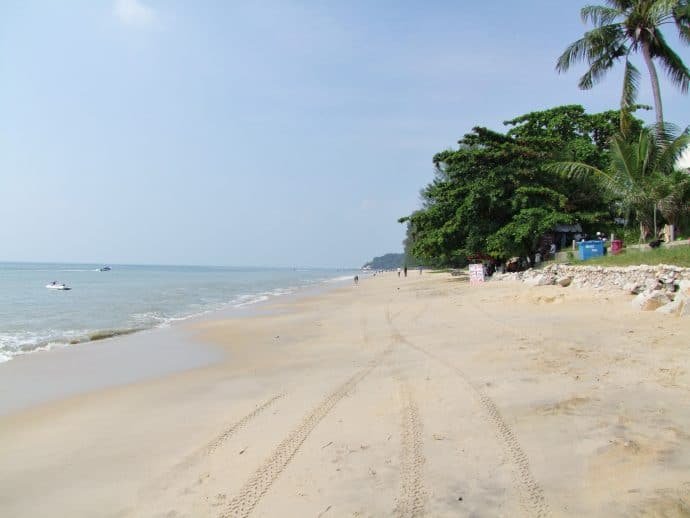

There we found a food corner (the Gurney Drive Hawker Centre) near a roundabout overlooking the seaside, where we could taste dishes based on shellfish and seafood (Seafood in English) which Jitima loves (but not me, well that's not the only food at this place either).
We will take advantage of being in the area to take a tour of the local shopping mall, the Gurney Plaza, a modern one. We will buy some cans of small dishes that you can't find in Thailand.

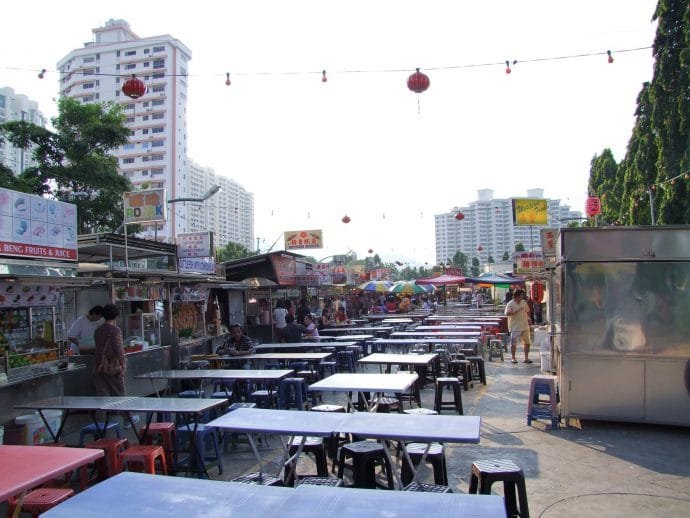


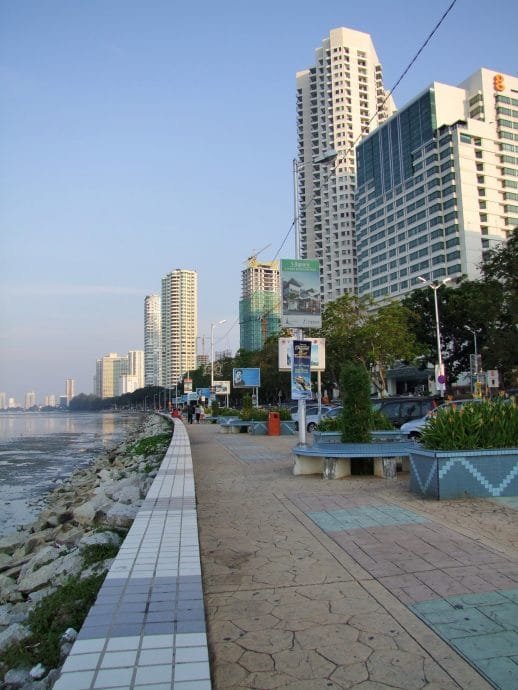
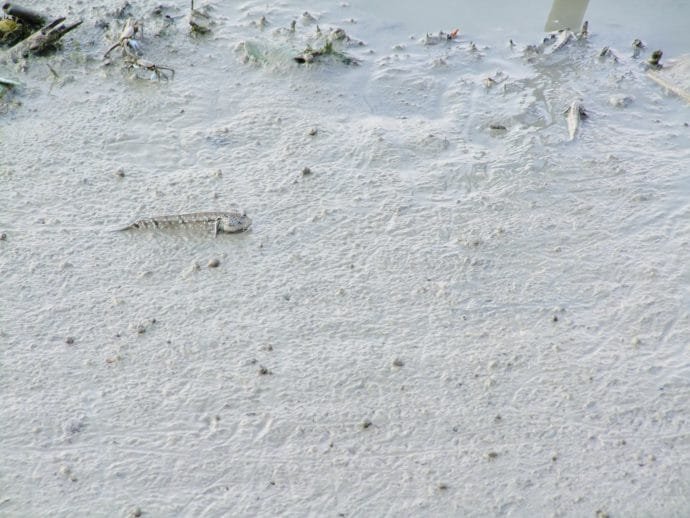

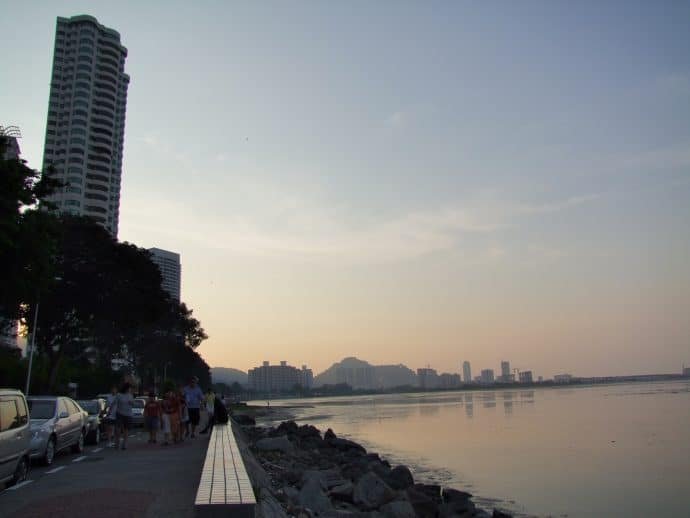
Day 4: Temples and Cheong Fatt Tze Mansion
We start this 4th day, again without a specific goal, just wandering around with the motorbike. After seeing the mosques, the churches, we said to ourselves that we would complete our visits of religious sites with a Hindu temple, and also Thai and Burmese Buddhist temples to follow, there is something for everyone.
In the afternoon, our goal was to return to our hotel in order to go to the visit at 15pm at the blue house aka Cheong Fatt Tze Mansion, right next to the Cathay Hotel.
Some small temples
So we started with the Hindu temple, and I should rather say ONE Hindu temple. There are obviously several on the island and in particular where we went, along Kebun Bunga Avenue, there were no less than 3 or 4 temples, all Hindu. And the one we went to was the first one we came across when arriving in the area, the Sri Meenakshi with its typical colorful tower. It was quite small so we didn't linger there either.

Then on our way to the Thai and Burmese temples, which face each other on the same street (Lorong Burma), we passed a street with a row of beautiful houses, decorated on the facade with flowers. I decided to stop there for a moment to take some photos, then noticing with irony that this street is called Bangkok Street!

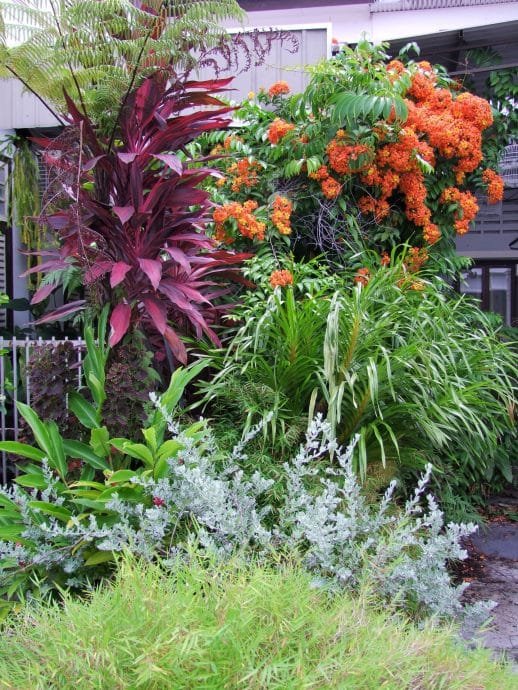
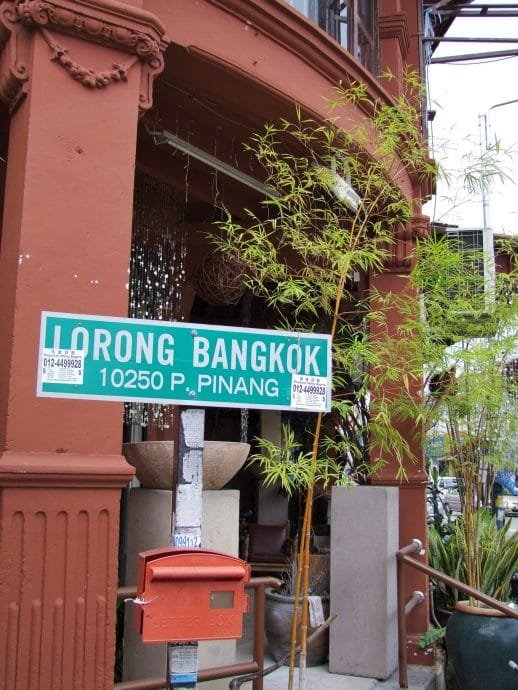
Right next door was the street of Buddhist temples. On one side, the Thai temple, Wat Chaiyamangalaram, known for its reclining Buddha inside the main hall. And opposite, the Burmese temple, Dhammikarama (even if the name is written in small letters on the side, while it appears in larger letters in the center, the fact that it is a Burmese Buddhist Temple).
We started with the Thai temple, which is nothing exceptional compared to those already visited in the country. There we find statues of Buddha, nagas and a style generally recognizable as being Thai although it is still in a generally more modern style.





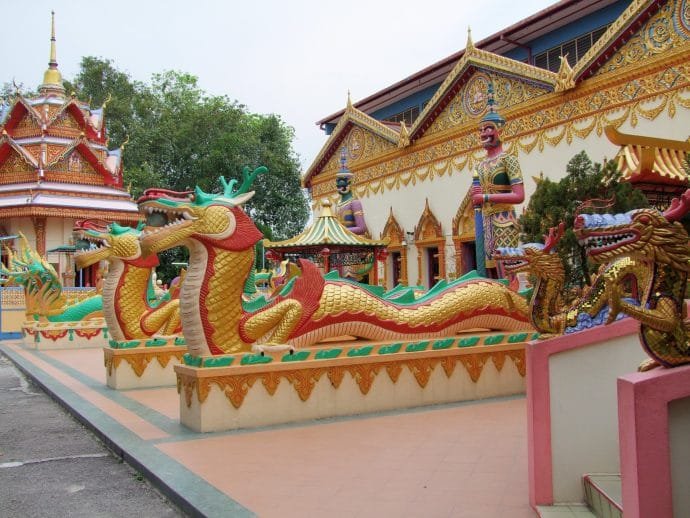
Somewhere at the entrance of the Thai temple, it seems shocking because a certain Hitler took this sign to make it the Nazi emblem. The swastika is indeed a diversion of the Hindu swastika which represents the solar wheel, eternity. Hitler wanted an eternal Reich, so… here for information.

Once done, we crossed the street to take a look at the Burmese temple, reminding us of our not-so-distant memory of our quick excursion to Yangon, a few months ago.
The atmosphere was quite peaceful. We found the illuminated Buddhas and a detail in the architecture that does not deceive, it is indeed Burmese. Funny to see how 2 peoples very close geographically and Buddhist, manage to distinguish themselves in their way of building places of prayer.

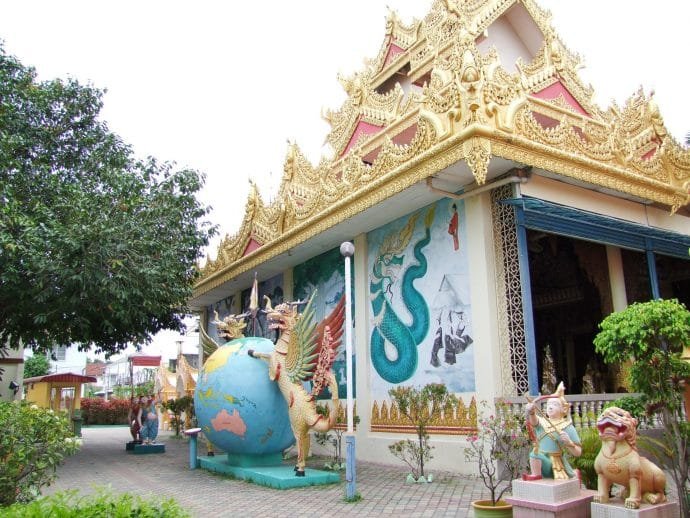
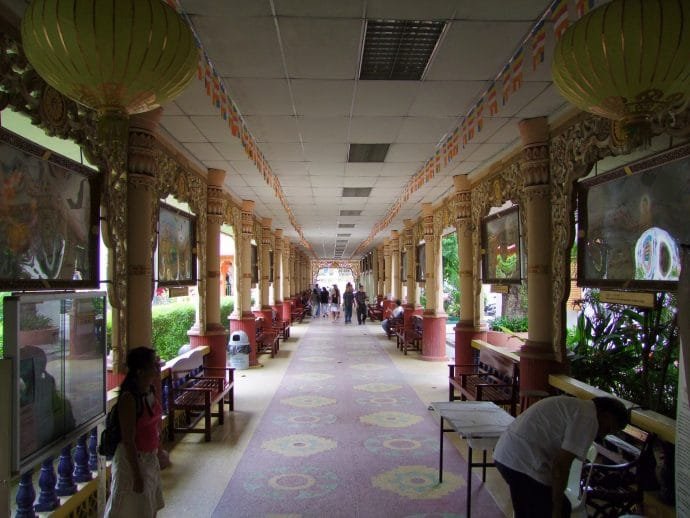
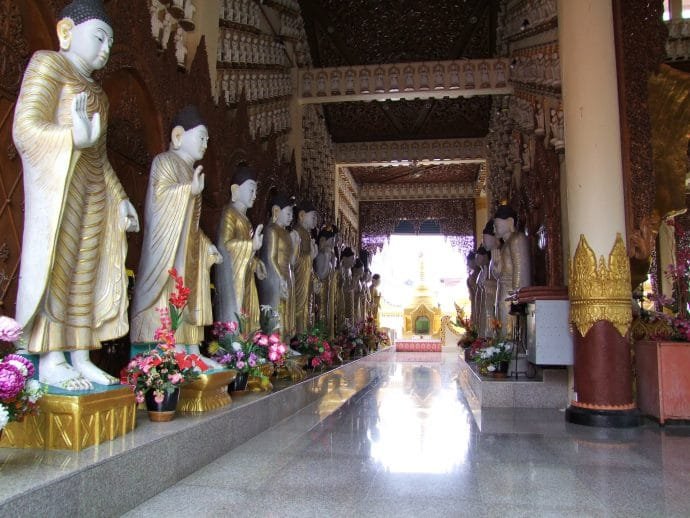
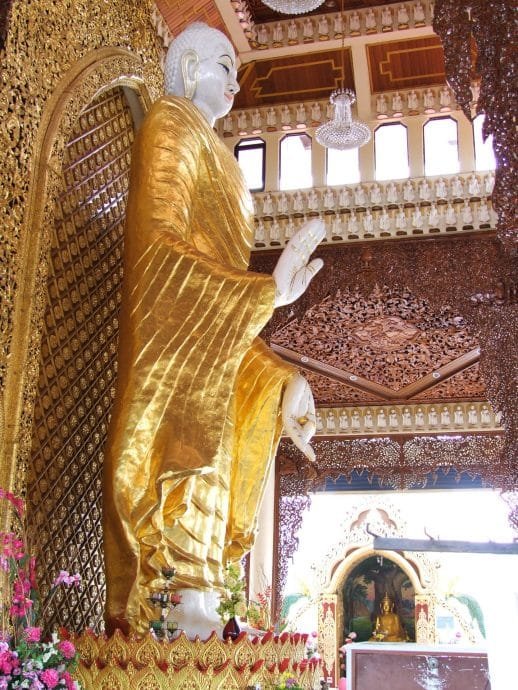
We then returned quietly to our hotel to take a shower (it was really hot that day).
Visit to Cheong Fatt Tze Mansion
What's that? For this visit, we just had to cross in front of our hotel to visit this historic residence. The Cheong Fatt Tze Mansion, also known as the indigo mansion (indigo mansion, sometimes blue mansion, mansion translating to mansion) was the house built by a wealthy Chinese merchant named Cheong Fatt Tze, born in 1840 and died in 1916 in Indonesia (the gentleman traveled a lot...)
The house dates from the end of the 19th century, 1880 to be precise.

The color comes from a mixture of lime with a natural dye, from the Indigo plant, a very fashionable color at that colonial time. In 1989, when his last son died (knowing that he had 8 wives, he did not hold back… the latter having been born when Cheong was 74 years old, and his wife 24…) the house therefore found itself on the real estate market. Bought by a group wishing to preserve the house, he began restoring it in 1991, a project that was completed in 1995 (The photos are visible in a room of the house, there was work to be done… Because it had been poorly maintained during all these years by Cheong's sons, due to lack of means).

In 2000, it was classified as a UNESCO World Heritage Site. Today, the house can be visited, but be careful, only 2 visits per day at 11am and 15pm are possible (it was 15pm there). Simply because it has been converted into a hotel, and if the house has 38 rooms, only 16 are used (in reality 20 because 2 duplexes actually have 2 rooms). It is easy to understand that if there were visits every hour, it would not be very pleasant for the guests... Although the visit mainly concerns the main part with its central interior courtyard, the rooms being isolated on the sides.
The fee is 10 RM (about 100 baht, or 2 euros) for the tours., if you want to sleep there, the prices I saw start from 250-300 RM (around 80€).
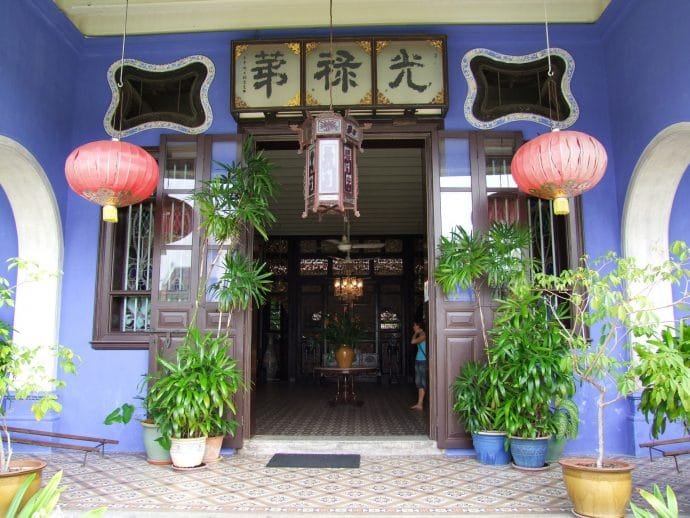
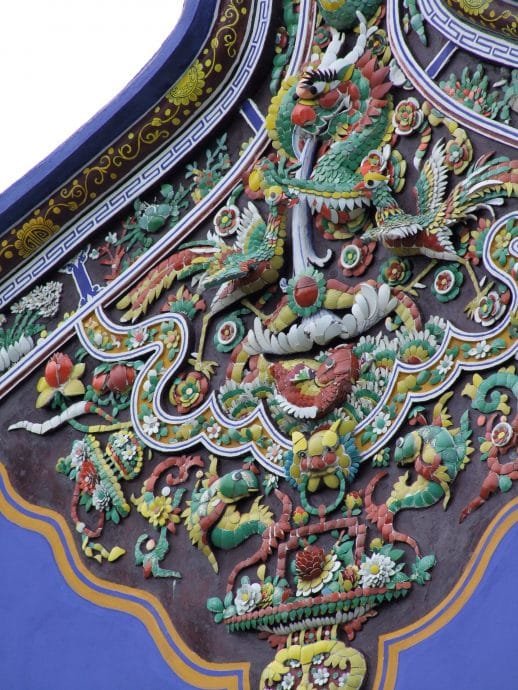
Small note, photos are forbidden inside. The visit is done either by a guide or by the manager of the hotel (which was our case). A lady of a certain age, originally Chinese and with a punch that does not go unnoticed! For those who understand English, the visit is rather "fun". Also know that the places have served as a setting for some films, the most famous of which was a French film with Catherine Deneuve, "Indochine", an Oscar-winning film in 1993.
Day 5: Penang Hill viewpoint of the island
For this last day, we could not leave Penang without going to the famous "Penang Hill", in other words a hill overlooking the entire island, thus offering a panorama of the bay with Georgetown, the port and the continent opposite in the background.
This one is accessible via a train pulled by a cable, commonly called a funicular. A nice way, but because of the number of people there, you are a bit squeezed in the cabin...
The funicular also serves as a "bus" for the inhabitants of the hill. Inhabitants of this side of the hill, I should specify, because the other side, at the arrival level, is also accessible by road. The journey includes stops where some locals get on or off at home as they please.
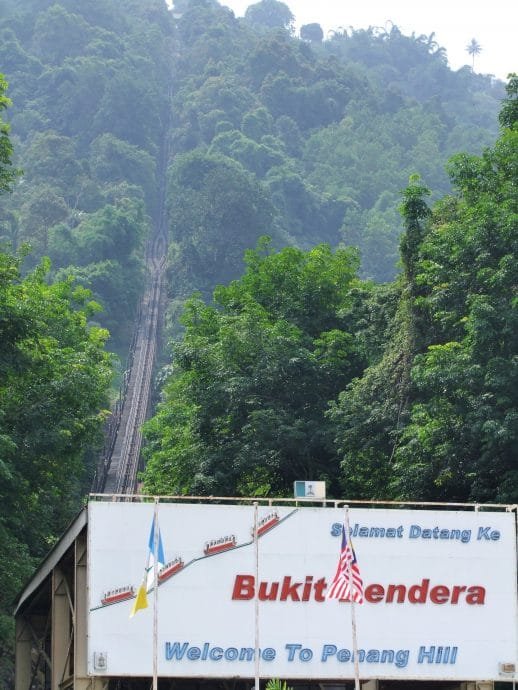
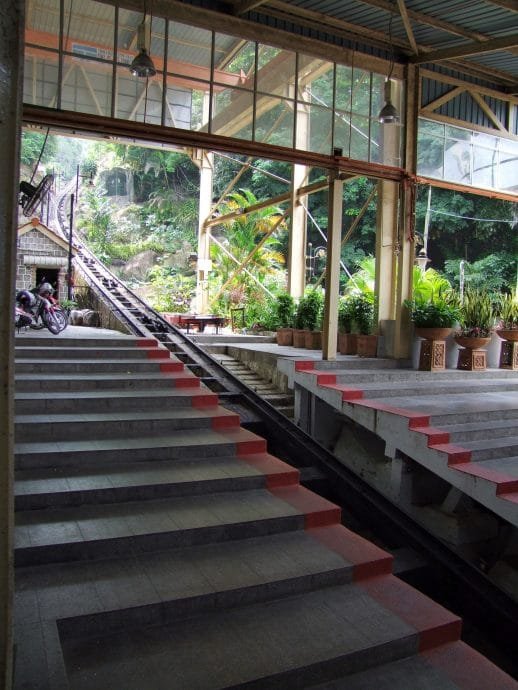

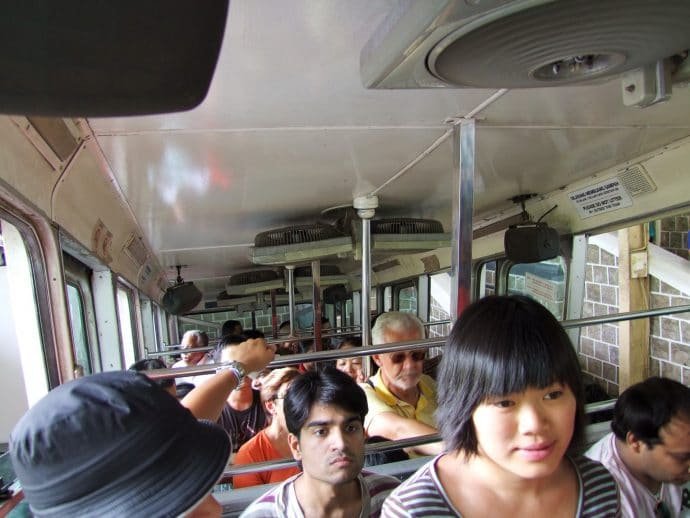
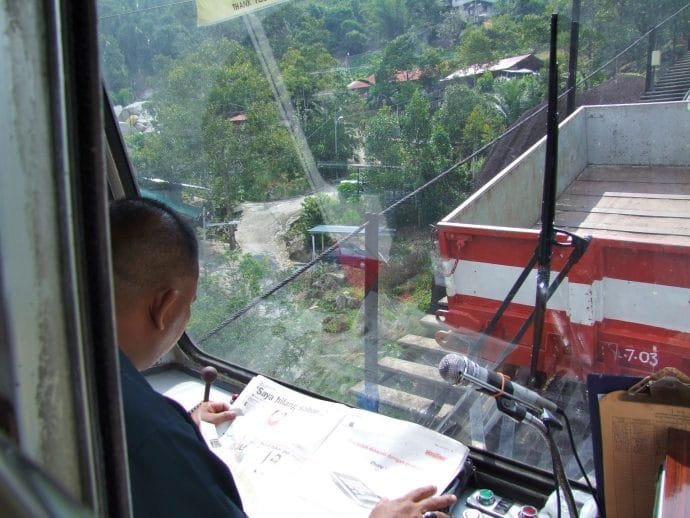
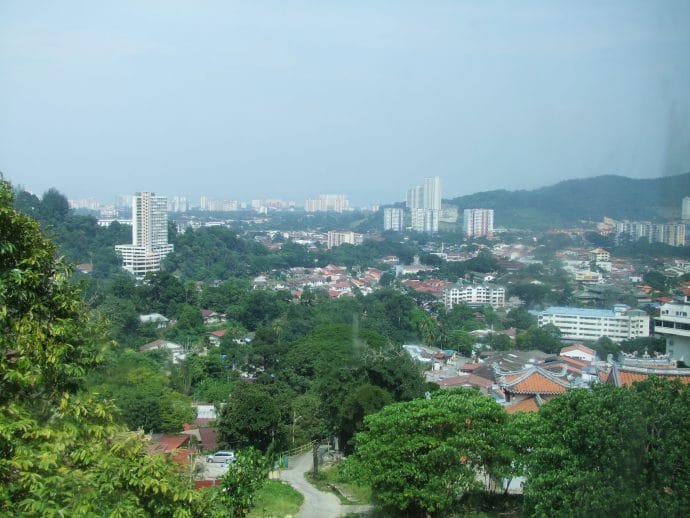


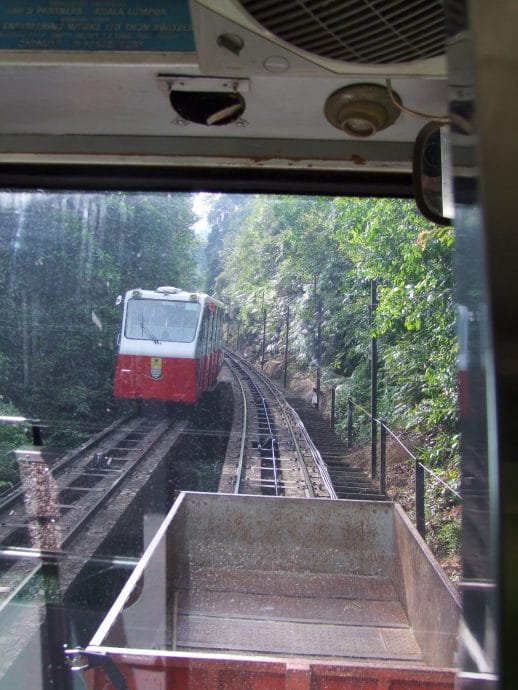
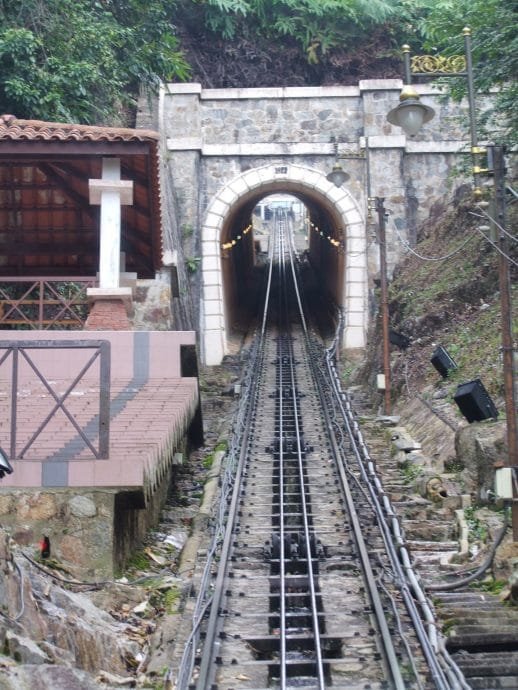
Once we reached the top, the train immediately refills and sets off again. We first take the time to watch it leave through the tunnel we had just passed under when we arrived. You should know that this one has been in service since 1923! (Editor's note: 2018 and it was completely renovated in 2010 just after our stay).
Then we start walking around a bit, to see the famous view. Around the square at the top, besides the classic souvenir shops, there is a restaurant, a mosque and a Hindu temple.
We also saw on display a copy of the old wooden wagons used previously (you had to have faith…)
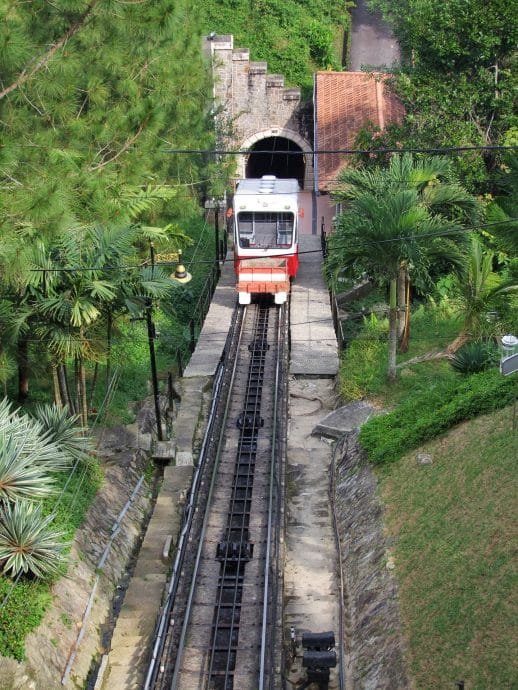
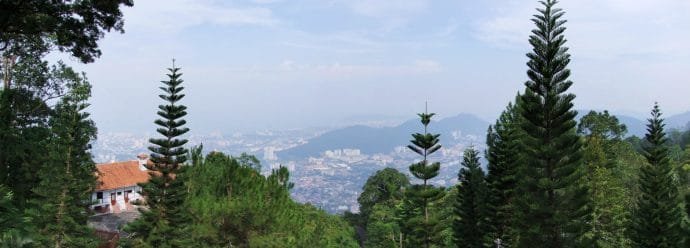

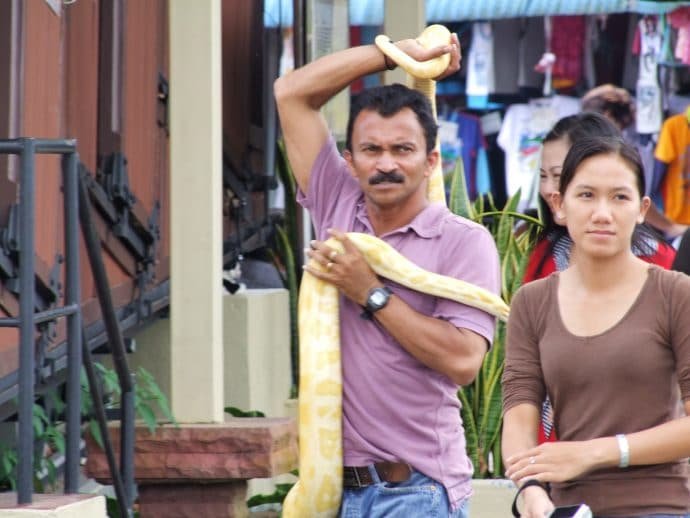
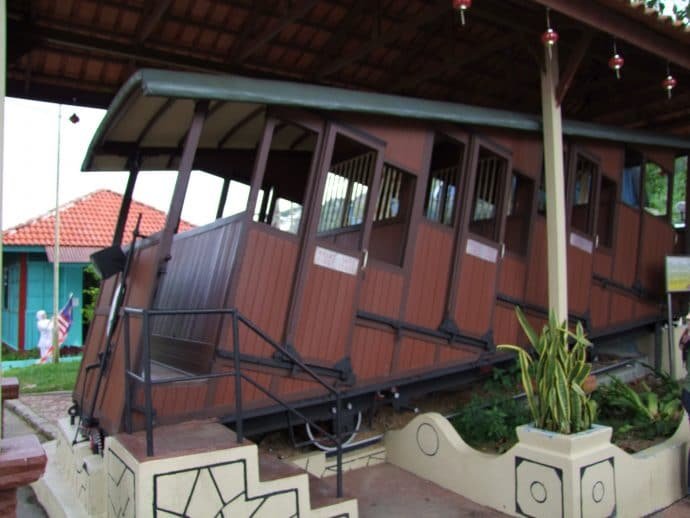
We quickly took a look at the colorful Hindu temple, which was under renovation (at least, they were touching up the ceiling paintings).
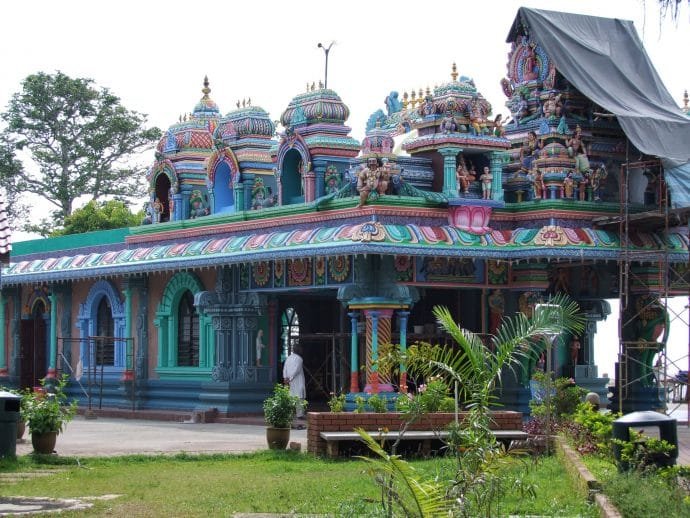


We ended the visit by going to see an old cannon placed there, without knowing if it was there originally (there was no fort here to my knowledge). Just before leaving, as the sun begins to hide behind the hill, announcing the time to return down, I came across a beautiful spider like I had already come across in Thailand (at home in fact).


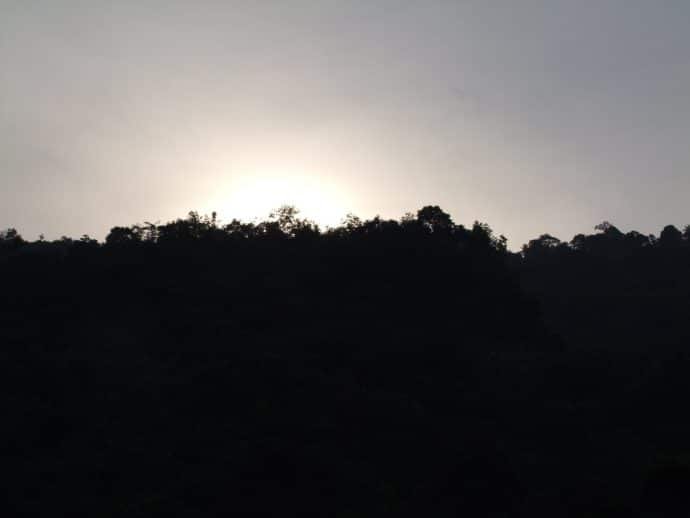
After a last meal near our hotel and a digestive walk at night, we finished this first visit to Penang. This short stay is over, we left the next morning for Bangkok. Editor's note: 2018, without us returning 5 years later, much more charmed by the island than this first time, notably thanks to the street art and the implementation of Making George Town, distilling funny sculptures with a historical anecdote about the place (and the weather was better too).





